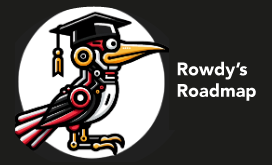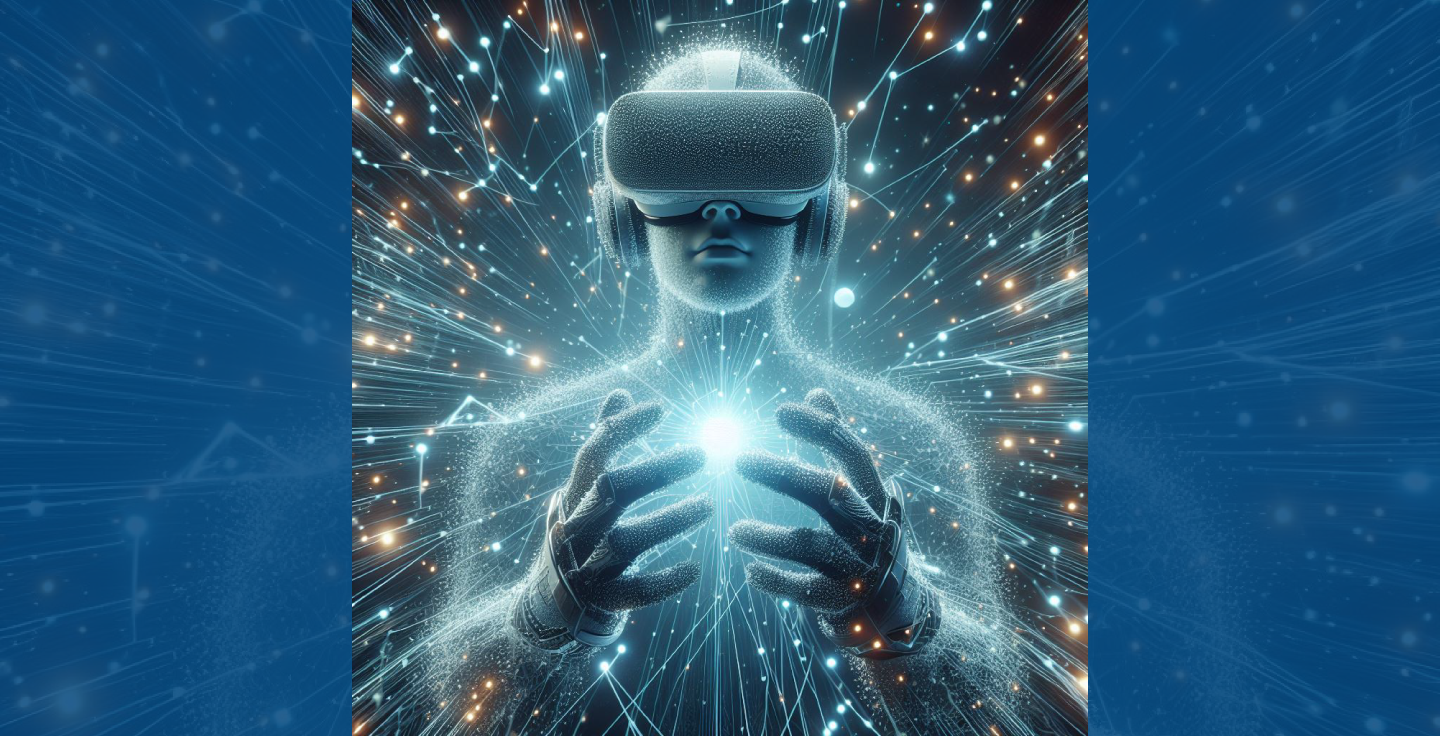Request Information
Ready to find out what MSU Denver can do for you? We’ve got you covered.
Welcome to MSU Denver’s Innovation website, a valuable resource for keeping up with the latest technological advancements. Here, you can find information about new technologies that have the potential to revolutionize education, get ideas from colleagues who are already using these technologies, and explore how emerging technologies may shape our future.

Generative Artificial Intelligence (GenAI) describes recently-developed tools, such as ChatGPT, which can generate multimedia content based on text input from the user. Depending on the tool being used, this content can range from simple text responses to multi-page essays, small thumbnails to screen-wide images, simple sound effects to entire videos. It accomplishes this via machine learning, a branch of artificial intelligence which makes computer systems emulate human learning methods and gradually improve their accuracy by paying attention to patterns and trends in data.
In late December 2023, Microsoft made their own Generative AI tool, Microsoft Copilot, available to corporate and educational Office 365 users, including all MSU Denver employees. While many of GenAI’s potential pitfalls are still being considered, Copilot addresses one of them by not maintaining any store of data it receives from MSU Denver accounts, ensuring the University’s data will not be provided to people outside the organization.
If you are interested in using Generative AI for any University work, please be sure to use Copilot to maintain data confidentiality. You can access Copilot at copilot.microsoft.com with your MSU Denver NetID and password. For more information about Microsoft Copilot in the MSU Denver computing environment, please check the Microsoft Copilot service page on the IT Services support portal.
 Academic Advising recently launched an AI-powered advising tool to assist the great work our Professional and Faculty Advisors are doing in supporting our students and helping them reach their academic goals.
Academic Advising recently launched an AI-powered advising tool to assist the great work our Professional and Faculty Advisors are doing in supporting our students and helping them reach their academic goals.
From Day 1, the goal was to create a resource for advisors that would provide fast access to accurate information, decreasing the time spent searching through degree requirements and curriculum details, freeing up time for our faculty advisors and Professional Advising experts to do more of the relationship building and in-depth academic and career counseling central to student success.
A team of contributors collaborated to envision and create this tool, including Stephanie Allen, Elizabeth Parmelee, Heather C., Brandy Swanson, and the amazing advising team at Metropolitan State University of Denver. The resource, developed in partnership with Eric Mason and Matt Sommer and their team of AI developers, is built on top of a large language model trained on publicly-available information on MSU Denver’s curriculum, degree plans, and graduation requirements.
Following several months of conversation, collaboration, design, and iteration, this tool – informally known as Rowdy’s Roadmap (a name bestowed on the tool after long deliberation by the MSU Denver Office of Online Learning team of Megan Eastment, Bridget Wetzel, Allie Dirks, Kimberley Coburn, Haley Kline Murphy, Meredith Laurel, and Andrew Moyers) – is officially available for use.
Check it out on the Faculty Advising Resources webpage.
Virtual Reality (VR) and Augmented Reality (AR) are a class of technological experiences that allow users to interact with computer-generated entities and environments in ways that are more immersive than traditional desktop computing experiences.
VR accomplishes this by simulating 3D environments which the user perceives through real-world physical action. This usually occurs with a wide-angle headset that tracks the user’s head position to update what the wearer is looking at in the 3D environment. These systems may also allow the user to interact with the environment using handheld devices, or even track their movement in the 3D space through sensors installed nearby.
AR, on the other hand, takes captured depictions of the real world (frequently through a device’s camera feed, though GPS maps or still pictures have also been used) and superimposes virtual information over them, usually in real time. This creates the namesake “augmented reality”, which users can interact with through their device.

Many industries are already using VR to provide simulated training. Professional drivers, pilots, and medical practitioners already practice their craft in simulated scenarios to learn the skills they need, but historically these scenarios have come with tradeoffs for safety: A pilot being in a real cockpit but not actually taking off, or a surgeon working on a cadaver instead of a living person. VR allows these simulated scenarios to more closely approach realism without increasing the risk involved.
Many major video games cater to VR enthusiasts, and some games have even been created exclusively for VR. AR has also seen a lot of use in entertainment – for example, Pokemon Go, a mobile game that encourages players to walk around by making different collectible monsters available at different places in their neighborhood (and across the globe), has been downloaded over 1 billion times since its launch in 2016. But these technologies aren’t limited to fantasy creatures and fantastical environments; industries such as housing and tourism have found value in enabling people to explore virtual recreations of real-world spaces without actually having to visit them.
AR might seem less powerful than VR in some regards, but the fact it builds off real spaces gives it great potential in its real-world applications. Want to see how a colour will look on an entire wall before buying any paint? Want to learn how to play a song by seeing what notes are being played in real time? Want your surgery to have a higher success rate because the surgeon’s glasses are using medical scans to show them what your insides look like before they make any incisions? These are just a few examples of how AR is being applied.
VR is powerful technology, and relatively new – which unfortunately means it’s not cheap. While there are currently several VR headsets in circulation that cost less than the original Oculus Rift’s $600 asking price, the difference usually isn’t much — and some options are markedly more expensive. AR can be cheaper, since it doesn’t always require its own hardware the way VR does, and many AR apps are available on mobile app stores. That said, AR does have its own group of dedicated devices in AR glasses, and while they’re on average less expensive than VR headsets, they still cost a minimum of a few hundred dollars and often go much higher. And all this is only accounting for hardware expenses; non-demo software must often be purchased separately, and if someone wants a custom-made app specific to their purposes, paying for development can get into four-, five-, even six-figure ranges. These kinds of expenses can be manageable for individuals making a one-time purchase for themselves, but can quickly become a barrier to any organizations wanting to provide VR or AR experiences to multiple people simultaneously.
VR and AR technologies are still relatively new, and unfortunately have not caught up with the advancements in accessibility seen in other tech fields. Many VR experiences are built on the idea of the user moving their limbs freely, and possibly all of them rely on the user’s sense of sight. For some people, being able to handle or even wear the required devices can be a challenge. Anyone considering using VR in a professional or educational capacity should keep these limitations in mind, and look for ways to maintain parity of experience for people of every ability.
Some proponents of VR/AR technology envision what futures are possible with these technologies. Sometimes these visions can be very grand, but while they may be possible from a technological standpoint, the same may not be true from a logistical or social perspective. In particular, it’s important to remember that many of these ideas only make sense in a mass adoption scenario—where everyone wears AR glasses, or we all engage with the same, monolithic VR space. But mass adoption is not guaranteed, and even if it were, neither is standardization; even in the current technological landscape of smartphones and mobile devices, there are plenty of people who have products from different providers, outdated devices, or no device at all. Anyone considering using VR/AR in a professional or educational capacity should have a clear idea of what value these technologies will add to their work, while keeping in mind what factors may limit the application of these technologies in their environment.
Are you using cutting-edge technologies to enhance teaching and learning at MSU Denver? Share your innovative ideas and projects with us!
Share Your Innovative WorkThe images displayed on this webpage (excluding Rowdy’s Roadmap and those in the footer) were initially generated with the help of Microsoft Copilot on January 18, 2024, and subsequently customized to align with our specific goals.